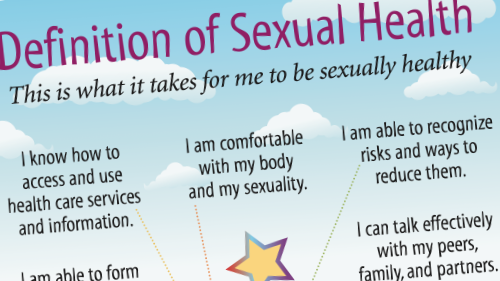Sexual Health: Risk and Protective Factors
Decades of research have identified risk and protective factors that influence adolescent sexual health. Risk factors increase the odds of early pregnancy and/or sexually transmitted infections (STI), while protective factors decrease those odds. More recently, researchers have begun to explore how these factors work together to help or harm youth.
Community or Neighborhood Factors
Protective Factors
- Communities with high levels of trust, cohesiveness, and social capital help young people avoid risky sexual behaviors and pregnancy. Neighborhoods of this kind are also supportive of positive, attentive parenting styles.
- Neighborhoods that offer youth many opportunities — such as after-school programs, sports, and job training — support positive sexual health, including decreased teen pregnancy.
Risk Factors
- Neighborhoods with high rates of violence, hunger, and/or substance use tend to have poor sexual health outcomes among their youth.
School Factors
Protective Factors
- School connectedness — involvement in school activities, liking school and finding it important, bonding with teachers and peers, feeling safe and fairly treated — protects against sexual risk taking.
- Academic achievement and aspirations lead youth to make healthy decisions about sex.
Family Factors
Protective Factors
- A supportive, responsive parenting style helps youth feel safe and enables them to plan positively for the future. In turn, this orientation toward the future makes it more likely that youth will avoid high-risk behaviors.
- Parental monitoring — so long as it does not become over controlling — helps youth maintain health.
- Family connectedness and good parent-child communication, including communication about sex, condoms, and contraception, help young people achieve positive sexual health outcomes.
- Youth who live with both of their parents are less likely to engage in certain risky sexual behaviors.
- When parents express disapproval of sex in adolescence, or support for contraception if a teen does have sex, youth are more likely to act on those values.
- Higher family income and higher levels of parents' education are protective factors.
Risk Factors
- Substance use in the household has a negative influence.
- An over-controlling parenting style backfires, leading youth to take more risks.
Peer Factors
- Youth have a tendency to reflect peer social norms, which may be protective or may increase risk. For example, if they believe their peers disapprove of sex, they are less likely to become sexually active. If they believe their peers are having sex, they are more likely to become sexually active.
Relationship Factors
Protective Factors
- Good communication between sexual partners is associated with girls using contraception.
- When girls feel connected to a sexual partner, they are more likely to use effective contraception.
Risk Factors
- Having an older romantic partner increases the likelihood of pregnancy and STIs.
- Frequent dating and having a close romantic relationship make sexual activity more likely.
Individual Factors
Protective Factors
- Having plans for a positive future and believing in the ability to control one's own life are protective factors.
- Spirituality and religious affiliation help youth avoid risky sexual behavior.
- Initiating sex at an older age is associated with better sexual health.
- Beliefs and attitudes about sex, condoms, and contraception can be protective or can increase risk. For example, a positive attitude toward condoms is protective; a permissive attitude toward sex increases risk.
- Having the skills and intention to use condoms and contraception, as well as belief in one's own ability to successfully use those skills, protects young people against early pregnancy and STIs/HIV.
Risk Factors
- Being lesbian, gay, or bisexual is associated with an increase in risky behaviors.
- Youth who use alcohol and other drugs are more likely to initiate sex at an early age and are also more likely to have multiple partners.
- Gang involvement, fighting, and violence are associated with risky sexual behavior.
References
- Centers for Disease Control and Prevention. (2010). Positive youth development promoting adolescent sexual and reproductive health: A review of observational and intervention research [Supplement]. Journal of Adolescent Health, 46, S1-S96.
- East, P. L. (2013). Cohesive, trusting communities buoy at-risk youth throughout adolescence [Editorial]. Journal of Adolescent Health, 53. doi:10.1016/j.jadohealth.2013.04.022
- Kirby, D., & Lepore, G. (2007). Sexual risk and protective factors. ETR Associates.
- Kogan et al. (2013). Avoiding adolescent pregnancy: A longitudinal analysis of African-American Youth. Journal of Adolescent Health, 53. doi:10.1016/j.jadohealth.2013.01.024
- Schantz, K. (2012). Substance Use and Sexual Risk Taking in Adolescence. ACT for Youth.





